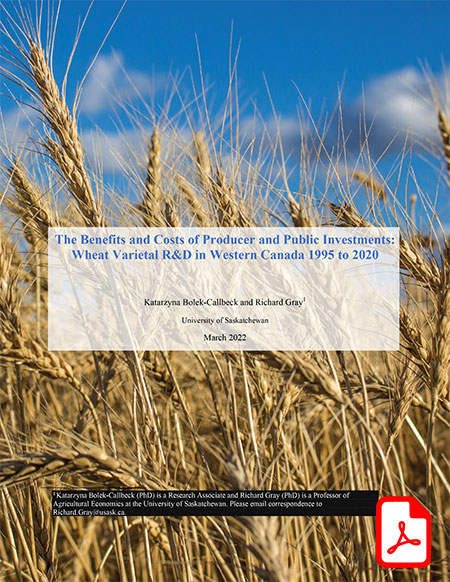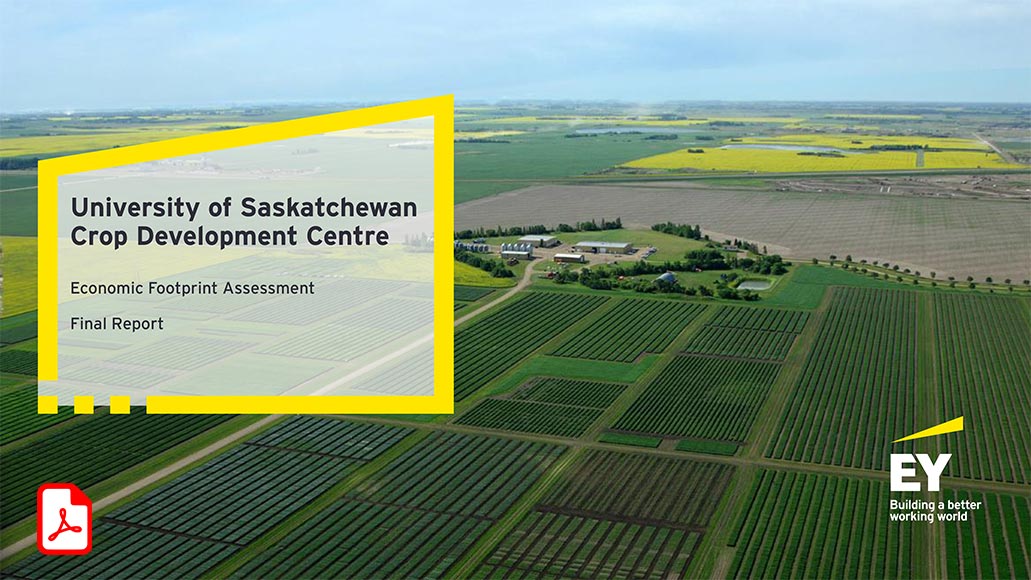The Value of Wheat Research
Return on Investment
The CWRC’s founding organizations – Manitoba Crop Alliance, Saskatchewan Wheat Development Commission and Alberta Grains – make considerable investments in innovative wheat research on farmers’ behalf. It is extremely important that this research produces results that directly benefit farmers and provides considerable return on investment (ROI) for their hard-earned dollars.
The following reports and studies indicate that farmer investment in public wheat breeding programs is providing substantive returns to farmers.
The Benefits and Costs of Producer and Public Investments: Wheat Varietal R&D in Western Canada 1995 to 2020
In 2021, the CWRC, Western Grains Research Foundation and Saskatchewan Winter Cereals Development Commission started working with Dr. Richard Gray and Dr. Katarzyna Bolek-Callbeck at the University of Saskatchewan to quantify the benefits of wheat breeding investments by western Canadian producers over the last few decades.
This study concluded that western Canadian farmers have received nearly $33 in return through varietal improvements for every dollar they invested in wheat breeding from 1995 to 2020. This was a significant increase from the last study conducted in 2012, which found a benefit-cost ratio of 20 to 1.
Only yield improvements were considered when calculating the benefits to farmers to keep the estimate as conservative as possible. Including other traits such as improved insect and disease resistance would have further increased ROI but are dependent on specific environmental conditions and are difficult to assess. Improvements in agronomic practices over the same period were also not included in the final ROI estimates.
University of Saskatchewan Crop Development Centre Economic Footprint Assessment
The CWRC signed a core breeding agreement with the University of Saskatchewan’s Crop Development Centre (CDC) in 2020, committing more than $9.6 million over five years for the development of spring wheat cultivars.
Recently, the University of Saskatchewan engaged Ernst & Young LLP (EY) to conduct an economic footprint assessment of the CDC. As part of this assessment, an ROI analysis was conducted to evaluate the benefits of the CDC’s plant breeding activities for farmers in Western Canada.
EY estimated the ROI for farmers by calculating ROI metrics such as the internal rate of return, the present value of net benefits, and the benefit-cost ratio. A discount factor was selected to adjust benefits and costs from different time periods to a consistent measurement.
The consolidated ROI results show that from 1971 to 2022, plant breeding research at the CDC delivered estimated PV of net benefits of $10.2 billion for Canadian farmers, an internal rate of return of 14.9 per cent, and a benefit-cost ratio of 10.8. The estimates showcase that across the CDC’s plant breeding programs, each dollar of plant breeding expenditures provided an estimated $10.8 of benefit across the three Prairie provinces.
On a crop-specific basis, CDC plant breeding research for spring wheat delivered an internal rate of return of 14.9 per cent, a benefit-cost ratio of 9.0 and an estimated PV of net benefits of $1.5 billion. Over the same period, CDC plant breeding research for winter wheat delivered an internal rate of return of 6.9 per cent, a benefit-cost ratio of 1.6 and an estimated PV of net benefits of $47 million.
The key metrics were calculated as follows:
- Net benefits – this is the difference between the discounted benefits and discounted costs. The net benefits are in present value (PV) terms.
- Internal rate of return – this represents the annual discount rate at which an investment breaks even, reflecting its profitability.
- Benefit-cost ratio – this represents the return to farmers for every dollar invested by the CDC in plant breeding research.
Farmer Investment Produces Field-Ready Varieties
Since 2020, CWRC investment via core breeding agreements with Agriculture and Agri-Food Canada, the University of Manitoba, the University of Alberta and the University of Saskatchewan Crop Development Centre has resulted in the development and registration of 47 field-ready wheat varieties across six wheat classes.


